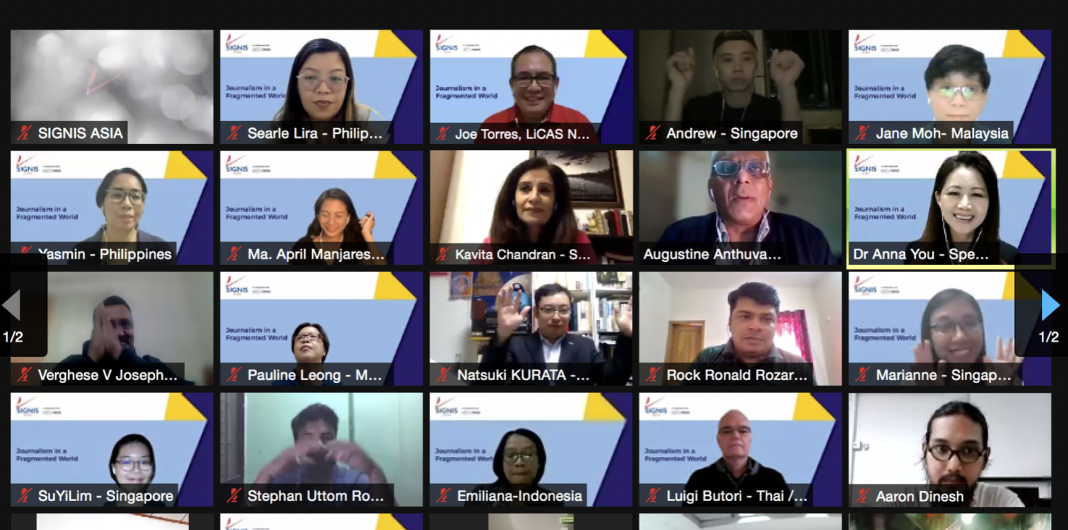Twenty-five participants from 14 countries tuned in for the second session of Journalism in a Fragmented Worldon 2nd November 2021. The focus this time of the inaugural Webinar coordinated by the SIGNIS Asia Journalism Desk (SAJD) was Media as a Catalyst for Change: Solutions Journalism. For a little over two hours, participants listened to the experiences, input and insights of media specialists from three countries, and were encouraged to discuss, analyse and engage during three “breakout” sessions.
“This journalism fellowship programme is really going to shake you up a little bit. It’s going to move you out of your comfort zone,” promised moderator Augustine Anthuvan, before introducing speakers Kavita Chandran, Jose Torres Jr and Anna Jihyun You.
Chandran, a Journalism Trainer with the Thomson Reuters Foundation, focuses on various humanitarian issues including climate change, human trafficking and social injustice. In each of her training sessions, she incorporates a module called Solutions Journalism because today’s world needs more positive news than negative. “I think we are all sick and tired of negative news,” she said. “Our profession has also made us quite cynical.”
Readers are bombarded with bad news every day. It has come to a point where people are feeling helpless when reading the news, and have become sceptical about what they are watching or reading, leading to the coining of the phrase “News Fatigue.” It also takes up too much time, some people say, and leads to argument; there never seems to be any positive or happy news. “What’s the point if the commodity you’re selling, you’re writing, is not even being received properly by the people who are reading it?” she said.
People really don’t want to read about doom and gloom any more. This is where Solutions Journalism comes in. It gets stories read; news consumers are informed of something new; and they can hope, instead of suffering from news fatigue. Solutions Journalism looks at effectiveness, not intention. It provides evidence of how results were produced, besides spotlighting an adaptive response to a problem and the associated results. Besides this, it examines how the response works, and explores what can be learned from the effort; produces insights; and discusses limitations of the approach.
Emphasising the changing role of journalists in his opening presentation, Jose Torres Jr urged them not to just gather, present and disseminate news, but become a medium of change. Torres, Editor-at-Large with LiCAS news, cautioned that media, which should be a catalyst for change, was in danger of becoming part of the problem. Journalists needed to understand their communities correctly, he said, and be able to read situations correctly within the proper context, or they run the risk of offering the wrong solution to the problem. “Understand who media is, and what we are,” he advised.
The session’s third presenter, Dr Anna Jihyun You, pointed out that journalists really needed to “up the ante” on ethics so that trust in the media could be restored. In line with this, she suggested that journalists should think carefully about their target audiences, in conjunction with how public opinion is formed. They should just as carefully consider who forms public discourse, and what issues form this discourse, as well as the extent of the influence of public discourse on matters that they want to write about. Sharing real-life experiences with the participants, she gave several examples of how they could time their interventions for maximum effect.
Post-introductory presentations, the participants were allocated another hour of input by Chandran, Torres and You in three separate breakout sessions where they had the opportunity of asking questions and interacting further with the speakers.


